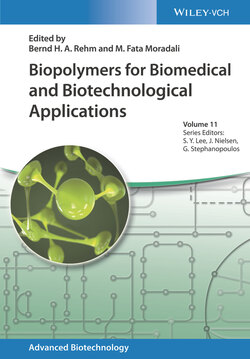Читать книгу Biopolymers for Biomedical and Biotechnological Applications - Группа авторов - Страница 46
2.6.2.5 Other Biological Properties
ОглавлениеMicroalgal polysaccharides might be useful to treat microbial infections since they can block the adhesion to the host cells and inhibit pathogen growth. In fact, sulfated polysaccharides from microalgae sources inhibited the adhesion of human pathogen Helicobacter pylori and the fish pathogens Vibrio campbellii, Vibrio ordalii, Streptococcus saprophyticus, and Aeromonas veronii [201]. Antimicrobial activity has also been reported for polysaccharides secreted from P. cruentum [45] and A. platensis [60]. EPS from Porphyridium purpureum had antimicrosporidian activity, inhibiting the growth of the honeybee parasite Nosema ceranae [43].
Furthermore, sulfated polysaccharides from macroalgae and marine animals were successful in the inhibition of the enzyme responsible for cholesterol absorption in the intestine, human pancreatic cholesterol esterase. This effect seems to be related to high sulfate content and molecular weight and the presence of 3‐sulfate in the monosaccharide molecule [191]. Thus, microalgal polysaccharides might have an important role in cholesterol regulation. Despite the lack of studies (Table 2.3), both Porphyridium sp. biomass and sEPS had hypocholesterolemic effect, decreasing the accumulation of hepatic cholesterol and lowering the plasma triglycerides and very‐low‐density lipoprotein (VLDL) cholesterol levels in rats fed with high cholesterol diets [38]. Moreover, EPS from P. cruentum had antiglycemic properties and reduced the blood glucose level in diabetic rodents [44].
Sulfated polysaccharides might have a promising future as biolubricants due to their rheological properties. In fact, the sEPS from Porphyridium sp. had a better lubricant effect than the most used lubricant hyaluronic acid, with better results in reducing friction and wear under different simulated joint efforts. These results are related to the great rheological stability over a range of temperatures, pH, and salinities [37]. Furthermore, this sEPS was successfully patented to be a compound in joint‐lubricating products to treat degenerative joint disorders caused by arthritis, due to the promising results demonstrated by injecting the sEPS in joints of rabbits' knees [202].
